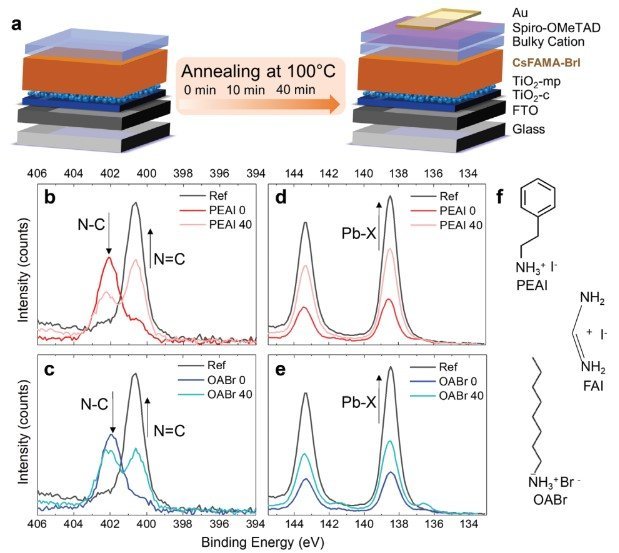Interface Reconstruction from Ruddlesden–Popper Structures Impacts Stability in Lead Halide Perovskite Solar Cells
Carlo Andrea Riccardo Perini, Esteban Rojas-Gatjens, Magdalena Ravello, Andrés-Felipe Castro-Mendez, Juanita Hidalgo, Yu An, Sanggyun Kim, Barry Lai, Ruipeng Li, Carlos Silva-Acuña, and Juan-Pablo Correa-Baena
Adv. Mater. 2022, 34, 2204726
https://doi.org/10.1002/adma.202204726
This study investigates the impact of bulky-cation-modified interfaces on the stability of halide perovskite solar cells, which has not been extensively explored. The research demonstrates the thermal instability of these interface layers used in state-of-the-art solar cells and reveals changes in the chemical composition and structure of the films under thermal stress, which affects charge-carrier dynamics and device operation. The type of cation used for surface treatment also affects the extent of these changes, with long carbon chains providing more stable interfaces. The study emphasizes the importance of prolonged annealing of the treated interfaces to enable reliable reporting of performance and inform the selection of different bulky cations.
Device Characterization: The photovoltaic performance was evaluated using a Fluxim Litos Lite setup, equipped with a Wavelabs Sinus-70 AAA solar simulator with AM1.5 spectrum for excitation.
Aging tests were performed using a Fluxim Litos setup, using 1 Sun equivalent illumination with no UV-component, holding the substrates at 55 °C in a N2 atmosphere and using an MPP tracking algorithm. Every 12 h, a J–V scan in reverse and forward direction was automatically acquired.

